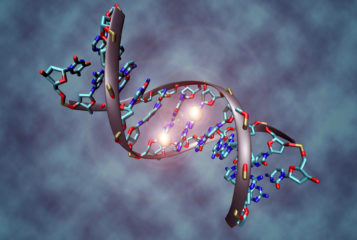New research has led to the discovery of an enzyme that can help to reverse the DNA damage associated with ageing and Alzheimer's disease.
A joint study from Massachusetts Institute of Technology (MIT) and Harvard University has led to the identification of an enzyme, HDAC1, which is critical for repairing age-related DNA damage to genes involved in cognitive functions including memory, performance and spatial awareness. HDAC1 levels usually decline with normal ageing and are known to be lower in Alzheimer's patients.
'It seems that HDAC1 is really an anti-ageing molecule,' Professor Li-Huei Tsai, senior author of the study, told MIT News. 'I think this is a very broadly applicable basic biology finding, because nearly all of the human neurodegenerative diseases only happen during ageing. I would speculate that activating HDAC1 is beneficial in many conditions.'
Published in Nature Communications, the study has shown that genome-edited mice without HDAC1 have a specific type of DNA damage that builds up as the mice age. Furthermore, it was shown that this damage could be reversed by the administration of a drug that activates HDAC1, resulting in improved cognitive function in the mice.
The drug used to activate HDAC1 in this study is called exifone, which used to be approved to treat dementia in humans, but was withdrawn from use as it was found to lead to liver damage in some patients. However, the researchers believe that other drugs could be developed targeting HDAC1 to reverse cognitive decline.
Initially, the HDAC1 deficient mice showed no difference in DNA damage or behaviour as compared to the control group. However, the cognitive decline became clear in the HDAC1 deficient mice as they aged, showing an increase in DNA damage in their neurons. As a result, the mice performed worse in memory and spatial navigation tests.
Specifically, the HDAC1 deficient mice were discovered to have eight-oxo-guanine lesions, which is a type of DNA damage caused by oxidation. Interestingly, an increase in this type of DNA damage is found in patients with Alzheimer’s disease.
The scientists propose that promoting the activation of HDAC1 has implications for Alzheimer's patients and also people with age-related cognitive decline. 'This study really positions HDAC1 as a potential new drug target for age-related phenotypes, as well as neurodegeneration-associated pathology and phenotypes,' said Professor Tsai. Her lab is continuing their research to determine whether DNA damage and HDAC1 also play a role in the formation of Tau tangles, misfolded proteins in the brain, a hallmark characteristic of neurodegenerative diseases such as Alzheimer's.
Sources and References
-
Study finds that ageing neurons accumulate DNA damage
-
DNA-repairing enzyme reverses age-related cognitive decline
-
MIT researchers discover 'anti-aging molecule' that can heal DNA lesions linked with Alzheimer's disease and cognitive declines from ageing
-
HDAC1 modulates OGG1-initiated oxidative DNA damage repair in the ageing brain and Alzheimer's disease





Leave a Reply
You must be logged in to post a comment.